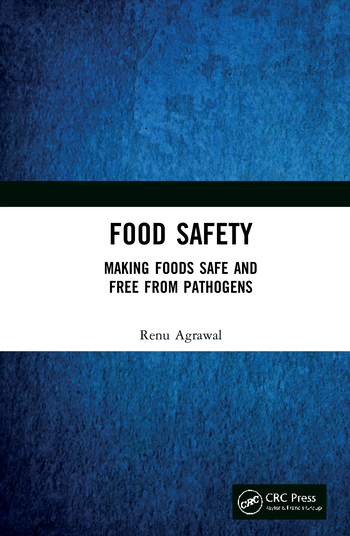Creating a Positive Partnership Between Foodservice Establishments and Inspectors

The restaurant industry has a significant impact on environmental health, and the magnitude of that impact has been increasing in recent years. Americans’ dependence on restaurants is noteworthy; on average, 48% of money spent by Americans on food goes toward restaurant meals.[1] As a result, in 2009, projected restaurant food sales grossed $565.9 billion, and 9% of the national workforce was employed at approximately 945,000 restaurant locations across the United States.[1]
The combination of these factors has led to a greater potential for foodborne illness (FBI) due to improper food handling; that is, contamination by other foods or by food handlers themselves.[2] With this heightened risk comes the need for increased food safety sanitation efforts. In recent years, the Centers for Disease Control and Prevention has formed numerous national-level partnerships between key restaurant industry stakeholders.[3] However, much of the responsibility for ensuring the safety of restaurant food still rests on the shoulders of one party: the local-level environmental health specialist (EHS), commonly known as a food inspector.
EHS are responsible for local inspection-related activities to promote safety and prevent outbreaks. They generally employ a combination of educational and enforcement techniques, as well as legislative and regulatory approaches, to correct violations. Previous research has shown that the education of food workers is far more effective in promoting safe behavior—including proper food preparation—than is enforcement.[4] However, education alone does not guarantee that food workers will employ safe food-handling practices.[5, 6] Studies have indicated that additional local interventions, such as increased inspection frequency and food safety certifications, are necessary to improve sanitation in restaurants.[6-8]
Traditionally, the relationship between EHS and restaurateurs has been adversarial, often due to assumed differences between the two groups. Foodservice workers frequently fear the inspection process, believing that the mission of EHS is to find violations and reprimand, rather than to work collaboratively toward a common goal of food safety. As a result of this sometimes tense relationship between EHS and foodservice employees, traditional regulatory approaches do not necessarily ensure the adoption of desired food safety behaviors.[9] Non-traditional approaches, such as announced inspections, emphasize the importance of food safety, rather than focusing on compliance with regulations, and have proven to be more successful than traditional approaches to restaurant regulation.[10]
To date, an understudied area remains the knowledge, attitudes and intentions of EHS and restaurateurs that may influence their willingness to collaborate on food safety at the local level. This study, conducted in Johnson County, KS, utilized a survey and focus groups to assess the attitudes of EHS and restaurateurs toward one another, and examined barriers to and methods for creating partnerships between the two groups.
Methods
Study Setting
Johnson County is an urban county in northeast Kansas that includes several suburbs of the Kansas City metro area. Johnson County contains 1,467 foodservice establishments: restaurants, schools, mobile units and 231 retail foodservice establishments, which include grocery and convenience stores.
Survey Participants and Instrument
Seven EHS, under the auspices of the Johnson County Environmental Department (JCED), are responsible for conducting inspections at foodservice establishments in Johnson County. These EHS conduct a variety of inspection activities that include routine, follow-up, complaint, courtesy, disaster, Hazard Analysis and Critical Control Points (HACCP), modified complaints, plan review and FBI investigations.
A Johnson County EHS developed a survey with the input of a biostatistician, public health consultant and a food inspector with 25 years of experience, and administered the survey to the other six EHS. The 32 survey items assessed current workload, the inspection process, communication efforts, training, compliance/enforcement actions and relationship between EHS and dining establishments. Answers were reported on a five-point Likert scale ranging from “Strongly Disagree” to “Strongly Agree,” or from “Very Dissatisfied” to “Very Satisfied,” depending on the item.
Focus Group Participants and Instrument
Foodservice employees were recruited randomly for focus groups from among the pool of restaurant employees in Johnson County. Recruitment occurred through letters, emails, telephone calls and onsite requests. Restaurateurs were asked to participate voluntarily and were informed that the purpose of the focus groups was to obtain their opinions and suggestions on services, barriers and ways of creating partnerships. The final pool of 21 focus group participants included three kitchen managers, one chef, two lead preparation workers, nine general managers, two district managers, two establishment owners, one Director of Operations and one whose position was not reported.
 A list of discussion topics was developed by the researchers and was partially influenced by responses from the above-mentioned EHS surveys to ensure that potential areas of convergent or divergent opinions were addressed (Table 1). Common issues such as services provided, educational material, enforcement actions and barriers faced were placed on both the survey and focus group questionnaire.
A list of discussion topics was developed by the researchers and was partially influenced by responses from the above-mentioned EHS surveys to ensure that potential areas of convergent or divergent opinions were addressed (Table 1). Common issues such as services provided, educational material, enforcement actions and barriers faced were placed on both the survey and focus group questionnaire.
Procedures
The survey was administered to six Johnson County EHS. Respondents were given a copy of the survey, then asked to complete it in a private room and place it in an unmarked collection envelope for the research team. After all six respondents completed the survey, responses were collected and descriptive statistics analyzed.
Three focus group meetings with 21 participants were conducted at the JCED in Olathe, KS. Each focus group lasted approximately 1.5 hours. Participants engaged in an open discussion of questions posed by a group moderator. Topics discussed by participants included: 1) services provided by Johnson County EHS/food inspectors; 2) materials, training and educational tools provided by EHS; 3) enforcement and compliance actions taken when food code violations exist; 4) barriers to food safety within the industry; and 5) ways to create positive partnerships with EHS. Items for discussion were chosen based upon their direct influence on the rapport established between EHS and restaurateurs.
Focus group discussions were recorded on audiotape and then transcribed. During each focus group, a scribe wrote out keywords and responses from participants while the moderator continued to engage participants in further discussion. Authors reviewed the notes and transcripts to identify and categorize common themes among responses.
Results
Survey of Environmental Health Specialists
Johnson County EHS completed six surveys, for a response rate of 100%. There were four male and two female respondents. All EHS had a 4-year college degree or beyond and were ServSafe certified. The respondents had served as Johnson County EHS for a length of time that ranged from 1 to more than 10 years. Of the six respondents, one was a certified food safety specialist, and five were registered EHS with two certifications provided through the National Environmental Health Association.
The majority (60%) of the EHS believed the services they provide to be effective. Overall, EHS were satisfied with their relationships with foodservice establishments, although the great majority of EHS agreed that improvements were needed in the following areas:
• Effective enforcement actions in response to food violations;
• Ability to influence decisions that affect job performance (unclear);
• Ability to provide training opportunities to foodservice establishments.
Four EHS (67%) also indicated that they either “disagreed” or “strongly disagreed” with the following statements: “Establishments do not face any barriers that would prevent compliance,” and “There is not much more that we can do to ensure compliance.”
Focus Groups with Restaurateurs/Foodservice Workers
Each restaurateur/foodservice worker focus group was comprised of four to 11 participants, for 21 participants. Feedback that emerged from the focus group sessions included perceived positives and negatives of the current inspection process, satisfaction with educational training and materials, barriers within the food industry that affect food safety, satisfaction with regulatory and compliance actions, motivating factors for food safety and suggestions for improving the inspection process and fostering partnerships between EHS and the food
industry.
• Positives of the inspection process. EHS were perceived by many restaurateurs and foodservice workers as being well-prepared, responsible, professional and willing to provide information and address questions. The inspection process was viewed as beneficial because EHS were consistent in their methods. Additionally, inspection reports issued by EHS were viewed as helpful, since they allowed restaurateurs to focus on problem areas, thereby allowing them the opportunity to improve.
• Negatives of the inspection process. Some participants provided contradictory information by expressing that EHS lacked professionalism and were neither consistent nor helpful in suggesting solutions to problems. In addition, some participants reported frustration in dealing with different inspectors from the same agency, since this inconsistency did not allow them the opportunity to build rapport with a specific inspector. Finally, a significant number of participants indicated they were not well informed about services provided by EHS.
• Educational training and materials. Informational handouts and food safety booklets, provided in English and Spanish, were viewed as being highly effective by focus group participants and were frequently utilized for training purposes. Materials written in Spanish were considered very useful when training Latino workers with limited English-language skills.
• Barriers within the food industry that affect food safety. Participants cited several barriers that hinder their ability to comply with food codes and maintain food safety: language, high employee turnover rates, lack of education, lack of current information regarding health regulations and failure of EHS to notify them concerning such changes.
• Regulatory and compliance actions. Participants indicated that restaurateurs want to be held accountable for violations in their restaurants. However, they desired that the process be fair and just. For example, participants welcomed the opportunity to discuss violations with EHS and explain their knowledge of health codes. Through such a cooperative process, they hoped to avoid fines and disciplinary actions for infrequent, accidental violations. Furthermore, participants expressed a desire that EHS be understanding and constructive in the inspection process. They stated that fines are hard on struggling restaurants and are not necessarily constructive. Finally, participants stated a need for more warnings, teaching and coaching for establishments with violations.
• Factors motivating food safety. Participants reported being motivated by the desire to serve safe food. The threat of citation or closure due to violations was only a secondary motivator. Restaurateurs expressed that they strive to deliver the best service possible, and that food safety, as opposed to avoiding citations, is the most important reason to comply with food codes.
• Inspection process. Participants indicated that email is the most effective method of communication, providing them with up-to-date information regarding changes in food code regulations, changes in the inspection process, classes and training offered by the health department and so forth. They reported that email also is useful for allowing them to communicate openly with EHS outside of the inspection process. They also showed strong interest in increased frequency of inspections as well as announced or courtesy inspections, which they claimed would help their staffs feel more at ease with EHS.
Participants indicated the need for training videos that utilize blatantly unpleasant visuals, stating that such images are difficult to forget and serve as constant reminders regarding the importance of food safety.
• Fostering partnerships between EHS and foodservice workers. Constant communication with EHS through emails, courtesy inspections or drop-ins were among methods suggested for creating positive partnerships between restaurants and EHS. Participants felt EHS need to be more available by attending weekly or monthly staff meetings at restaurants and setting up training workshops at restaurants. In addition, public education from Johnson County EHS was recommended to address misconceptions about the restaurant industry. For example, participants felt that the public held misconceptions regarding food code regulations, violations and causes of FBI. These misconceptions tend to be negative, according to participants, and cause the public to become wary of their restaurants. Participants felt that violation postings on the state health department’s Web site lead to false negative assumptions about their restaurants. Many felt this Web site should only list repeat violators.
Discussion and Implications
Results of this study indicate a great need for emphasis on training and education of restaurateurs and foodservice personnel, better communication and dissemination of up-to-date information between restaurateurs and EHS and the implementation of revised county-level inspection policies. The contradictory opinions expressed about EHS—that they were professional, communicative and knowledgeable, as well as unprofessional and inconsistent—could indicate respect for the EHS in general, but difficult specific encounters with inspectors, or perhaps a belief that EHS have know-ledge regarding food safety that they are not sharing with the food industry.
Currently, before being employed, foodservice workers in Johnson County are not required to undergo food safety training. The lack of food safety knowledge, coupled with factors such as language barriers, improper food handling practices and high turnover rates, only adds to the challenge of getting food workers to implement behavioral changes. JCED—and other county-level food inspection agencies across the nation—need to respond to the realities of the foodservice workforce by developing more appropriate education and training programs for foodservice workers.
It is also important that local agencies focus on building relationships that foster trust and understanding through effective communication and constant education. As of 2008, Johnson County EHS offer food safety training classes to foodservice workers once every quarter. To be effective, the county will need to increase the number of classes offered and provide varying times for those classes, which will allow the flexibility and accessibility needed to accommodate the needs of different restaurateurs. Furthermore, these classes should be opened to the public so that consumers can be educated along with foodservice workers. Consumers, too, need to understand the importance of food safety, the effectiveness of handwashing in reducing the spread of disease, how to identify food code violations and when to call the health department for intervention.
Because the sample size for this study was relatively small, it may not be representative of Johnson County as a whole. In addition, the majority of the focus group participants held high-level management positions within their prospective restaurants. Therefore, responses to questions such as barriers faced within restaurants may have been guarded. In addition, this project did not include non-English speaking restaurateurs. While the researchers acknowledge these limitations, the results can still be useful in guiding future studies about the vital role of partnerships within the food
industry.
The restaurant inspection process should be advantageous for both the EHS and restaurateur, who both share the goal of serving safe food to consumers. The results of this study indicate that improvements can be made to increase positive interactions between restaurateurs and EHS as they evaluate food safety practices. This study may prove useful for other communities who wish to evaluate local-level food safety relationships.
Acknowledgments
The authors would like to acknowledge the following: Kansas Public Health Leadership Institute staff; the Kansas Department of Health and Environment/Kansas Department of Agriculture; and the restaurateurs and foodservice workers of Johnson County who took time out of their busy schedule to participate in the focus groups.
Aqualia L. Nelson, MS, REHS/RS, is at the Munson Army Health Center. She may be reached at aqualia.l.nelson@us.army.mil.
Aiko Allen, MS, is an independent public health consultant in Wichita, KS.
Suzanne R. Hawley, Ph.D., MPH, is an Assistant Professor in the Department of Preventive Medicine and Public Health at the University of Kansas School of Medicine-Wichita. She may be reached at shawley@kumc.edu.
Theresa St. Romain, MA, is a Senior Coordinator in the Department of Preventive Medicine and Public Health at the University of Kansas School of Medicine-Wichita.
Shirley A. Orr, MHS, ARNP, NEA-BC, is Director of Local Health within the Bureau of Local and Rural Health at the Kansas Department of Health and Environment.
References
1. www.restaurant.org/pdfs/research/2009Factbook.pdf.
2. www.fda.gov/Food/FoodSafety/FoodSafetyPrograms/FoodProtectionPlan2007/ucm132565.htm.
3. Radke, V. 2006. The need for partnerships for food safety. J Environ Health 69:34-35.
4. Allwood, P.B., P. Borden-Glass and L. Petrona. 1999. The vital role of restaurant health inspections. J Environ Health 61:25-28.
5. Cotterchio, M., J. Gunn, T. Coffill, P. Tormey and M. Barry. 1998. Effect of a manager training program on sanitary conditions in restaurants. Pub Health Rep 113:353-358.
6. Mathias, R., R. Sizto, A. Hazlewood and W. Cocksedge. 1995. The effects of inspection frequency and food handler education on restaurant inspection violations. Can J Public Health 86:46-50.
7. Bader, M., E. Blonder, J. Henriksen and W. Strong. 1978. A study of foodservice establishment sanitation inspection frequency. Am J
Public Health 68:408-410.
8. Raval-Nelson, P. and P. Smith. 1999. Food safety certification and its impacts. J Environ Health 61:9-12.
9. Jenkins-McLean, T., C. Skilton and C. Sellers. 2004. Engaging foodservice workers in behavioral-change partnerships. J Environ Health 66:15-19.
10. Reske, K., T. Jenkins, C. Fernandez, D. VanAmber and C. Hedberg. 2007. Beneficial effects of implementing an announced restaurant inspection program. J Environ Health 69:27-34.
Looking for a reprint of this article?
From high-res PDFs to custom plaques, order your copy today!








